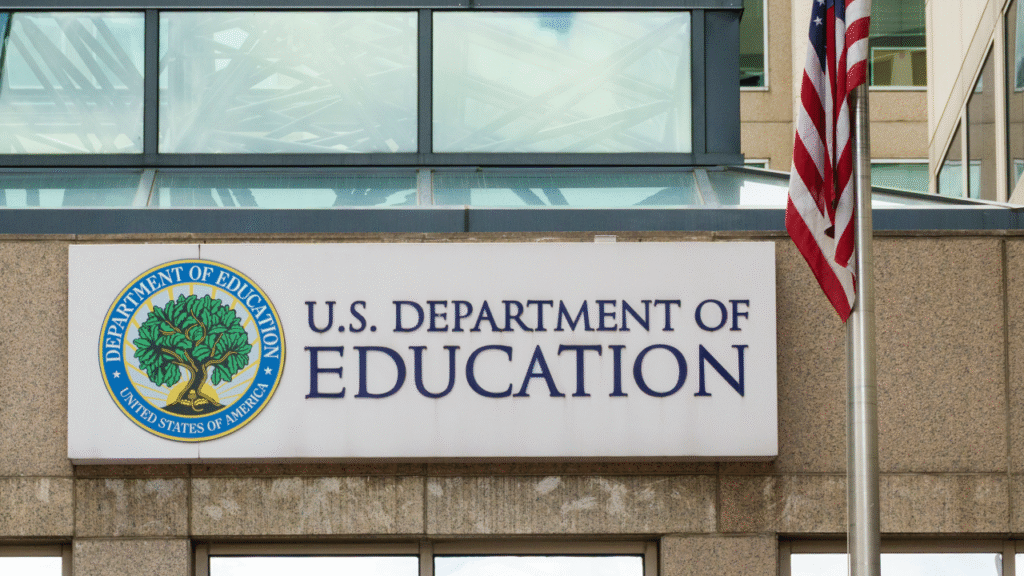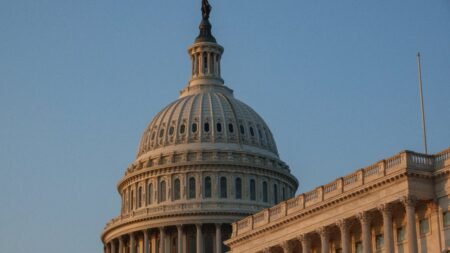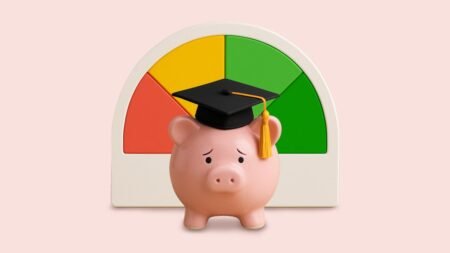Kevin Carter / Contributor/ Getty Images
Income-driven repayment plans are meant to help you stay active in federal student loan repayment, even when your wages aren’t as high as you’d like. The Saving on A Valuable Education (SAVE) Plan, however, has completely sidelined borrowers.
In fact, the 7.8 million federal loan-holders enrolled in SAVE have been on an interest-free repayment pause for nearly a year. Owing a combined $440 billion, according to mid-2025 data from the Department of Education, they’re no doubt waiting for a hammer to drop.
That’s because the Trump Administration’s Department of Education is happy to go along with widespread efforts to replace SAVE — it also isn’t accepting new SAVE applicants.
As Betsy Mayotte, the founder of The Institute of Student Loan Advisors nonprofit, said at a higher education finance symposium last month, “We know that SAVE is dead — we just don’t know who’s burying the body, if it’s going to be the courts or Congress.”
SAVE seems unsalvageable: How did we get here?
- June 2023
-
The Biden Administration created the SAVE Plan, in part to replace REPAYE.
- June-July 2024
-
Two federal courts froze aspects of the SAVE Plan, agreeing with state attorneys general who say the Biden Administration overstepped its power.
- August 2024
-
The Education Department implemented a general forbearance (or repayment pause) due to the ongoing litigation.
- October 2024
-
The interest-free SAVE Plan forbearance is extended.
- January 2025
-
New guidance from the Education Department indicates borrowers should expect the pause to continue.
- April 2025
-
The Trump Administration, which isn’t motivated to appeal the 8th Circuit Court’s latest decision, started the negotiated rulemaking process to, in part, remove SAVE permanently.
What comes next? Mark Kantrowitz, the nation’s leading student loans expert, estimated in April that borrowers would have at least “a month or two” more on SAVE. The Education Department’s latest advisory, published in mid-January, offers this timeline:
-
- September 2025: Contracted federal loan servicers might begin recalculating SAVE borrowers’ dues on an alternative repayment plan.
- December 2025: SAVE borrowers’ first monthly payments on a new plan could start coming due.
- February 1, 2026: SAVE borrowers won’t have to recertify their IDR eligibility until at least this date.
Given the moving targets and mass confusion — Reddit users have reported receiving automated but incorrect return-to-payment emails, for example — don’t be surprised if you and your peers nationwide are stuck in SAVE until 2026.
| State | Enrolled SAVE borrowers |
|---|---|
| Alabama | 102,900 |
| Alaska | 11,000 |
| Arizona | 148,400 |
| Arkansas | 65,100 |
| California | 597,300 |
| Colorado | 134,300 |
| Connecticut | 71,500 |
| Delaware | 21,000 |
| District of Columbia | 21,900 |
| Florida | 475,800 |
| Georgia | 286,000 |
| Hawaii | 19,400 |
| Idaho | 41,900 |
| Illinois | 244,700 |
| Indiana | 147,800 |
| Iowa | 68,400 |
| Kansas | 60,000 |
| Kentucky | 102,500 |
| Louisiana | 101,900 |
| Maine | 32,500 |
| Maryland | 127,800 |
| Massachusetts | 127,000 |
| Michigan | 239,700 |
| Minnesota | 131,500 |
| Mississippi | 69,900 |
| Missouri | 136,700 |
| Montana | 23,100 |
| Nebraska | 38,500 |
| Nevada | 59,400 |
| New Hampshire | 27,600 |
| New Jersey | 167,200 |
| New Mexico | 40,300 |
| New York | 374,300 |
| North Carolina | 237,800 |
| North Dakota | 13,100 |
| Ohio | 299,600 |
| Oklahoma | 77,200 |
| Oregon | 104,700 |
| Pennsylvania | 289,800 |
| Puerto Rico | 50,100 |
| Rhode Island | 21,800 |
| South Carolina | 131,200 |
| South Dakota | 18,500 |
| Tennessee | 151,600 |
| Texas | 591,700 |
| Utah | 55,000 |
| Vermont | 13,600 |
| Virginia | 177,900 |
| Washington | 133,500 |
| West Virginia | 38,500 |
| Wisconsin | 120,700 |
| Wyoming | 8,600 |
| Source: Department of Education, as of January 2024 |
What to do if you’re stuck in SAVE
Be skeptical of what your federal loan servicer tells you, and don’t hold your breath waiting for Congress. Yes, that’s a tough place to be, but that’s where we find ourselves.
The more nuanced answer is that your best next step depends on your repayment goals.
If you’re pursuing federal loan forgiveness…
Your nonpayments under SAVE aren’t counting toward IDR-related relief (awarded after 20 or 25 years of payments) or Public Service Loan Forgiveness (10 years). So, if you’re close to qualifying for either type of loan cancellation, it could behoove you to switch to the one existing IDR plan that’s still awarding forgiveness, Income-Based Repayment.
Just keep in mind that…
- While the Education Department is far behind in processing IDR applications, you could be awarded an interest-free “processing forbearance” while it awaits approval.
- Congress’ budget reconciliation bill is proposing a new single IDR option (for new borrowers), though how it takes shape over the summer is anyone’s guess. (Lawmakers have set a July 4 deadline for their bill to become reality, according to reports.)
PSLF Buyback
If you already have 120 months of qualifying service for a PSLF-eligible employer, you might consider this workaround. It allows you to “buy back” monthly payments that you didn’t previously submit because you were on a deferment or forbearance, such as the SAVE general forbearance. Be aware, though, that the Education Department is also currently delayed in processing buyback applications.
If you aren’t close to achieving federal loan forgiveness, and don’t mind purgatory…
Then stay where you are — but prepare for that hammer’s swing.
Imagine, for instance, your monthly payments doubling on a different repayment plan once SAVE is gone for good. Mayotte has speculated that SAVE borrowers could be returned to REPAYE.
What we do know is that the Education Department would have to transition SAVE borrowers to an alternative plan, potentially the Repayment Assistance Plan (RAP) in conservative lawmakers’ budget reconciliation bill.
But it might be wise to put your blinders on, and focus on what you can control. Some of the SAVE borrowers Bankrate interviewed this spring said they were using this elongated repayment pause to…
- Earn interest on would-be monthly dues via a high-yield savings account
- Pay off other, perhaps higher-interest debt
- Make voluntary payments to whittle away at loan interest
What’s your next step?
Other strategies to consider include optimizing your budget and utilizing the Department of Education’s Loan Simulator to determine whether you should apply for an alternative IDR plan.
Keeping communication lines open with your federal loan servicer is also critical. That way, you can stay apprised of changes to your repayment options.
Whatever you do, don’t stand idly by, particularly if your financial situation is in bad shape. Take it from a certified student loan counselor: Steps like those above can help you avoid joining the growing crowd of student loan borrowers in default.
Why we ask for feedback
Your feedback helps us improve our content and services. It takes less than a minute to
complete.
Your responses are anonymous and will only be used for improving our website.
Help us improve our content
Read the full article here

















